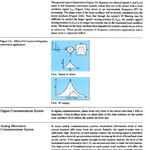kh4n
Member level 2
Hi all,
My aim is to measure NF of a downconverting mixer, IFout is around 200MHz. I have an agilent PSA for NF measurement and my LO source choices for the mixer are an agilent sinal gen. without ultra low phase noise option and a PLLVCO IC from Hittite. Hittite part has better far out phase noise performance, ie phase noise at 10M offset is 9 dB better than agilent, and it goes flat through higher offset freqs(let me remind my if is around 200M). This effects my NF.
Agilent has better PN at offset frequencies upto 500kHz, as expected.
Previously I used a cavity PBF from KnL around LO, of course that helped. But after finding more about mixer I will desing for a decent LO.
Do you have any comments and/or suggestions on this topic, (biasing and matching improvements are already done at mixer side)? I am especially asking about LO effects on NF.
Thanks in advance...
My aim is to measure NF of a downconverting mixer, IFout is around 200MHz. I have an agilent PSA for NF measurement and my LO source choices for the mixer are an agilent sinal gen. without ultra low phase noise option and a PLLVCO IC from Hittite. Hittite part has better far out phase noise performance, ie phase noise at 10M offset is 9 dB better than agilent, and it goes flat through higher offset freqs(let me remind my if is around 200M). This effects my NF.
Agilent has better PN at offset frequencies upto 500kHz, as expected.
Previously I used a cavity PBF from KnL around LO, of course that helped. But after finding more about mixer I will desing for a decent LO.
Do you have any comments and/or suggestions on this topic, (biasing and matching improvements are already done at mixer side)? I am especially asking about LO effects on NF.
Thanks in advance...
